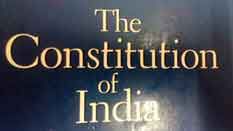Austin's Command Theory: Criticism and Utility
The Command Theory of Austin, which was created by John Austin, a legal
philosopher from the 19th century, is a fundamental aspect of legal positivism.
This theory asserts that the very nature of law is firmly based on commands that
are given by a supreme authority, along with the anticipation of obedience that
is supported by penalties.
Legal Positivism:
Legal positivism is a way of looking at law that puts emphasis on keeping it separate from morality. It focuses on the tangible and observable parts of legal systems. According to this approach, whether a law is valid or not depends only on where it comes from, not on its moral aspects.
To put it simply, a law is considered valid if it has been made through recognized legal procedures like legislation, without taking into account its ethical consequences. This separation of law and morality sets legal positivism apart from other theories that suggest a strong link between the two.
Let's say there's a country. In this country, there's a regime that has total control and power. This regime decides to make laws that go against basic human rights. Now, if we look at it from a legal positivist point of view, these laws could be seen as valid if they were made through the proper legal channels, even though they might be morally wrong.
This shows us the idea of legal positivism, which says that the legitimacy of a law depends on where it comes from and how it was made, rather than whether it's morally right or wrong. Legal positivism has been criticized for potentially giving legitimacy to unfair laws, but it has also had a big impact in shaping how we analyse legal systems all over the world.
Explanation of Austin's Command Theory:
To elucidate its principles, let's now explore examples and the fundamental elements of Austin's Command Theory.
Command:
According to Austin's theory, a command is a straightforward instruction from an acknowledged governing body. It acts as a manifestation of the ruler's desires, signifying the actions or abstentions expected from individuals. Commands can come in different forms, such as laws, rules, and authoritative directives.
Example:
Let's take an example of a legislative act that puts forth a directive, stating, "The maximum speed allowed on highways should not surpass 65 miles per hour." This is an instruction emanating from the governing body (the legislature), guiding individuals on the appropriate conduct to be adhered to.
Sovereign Authority:
According to Austin, the supreme power in a legal system is held by an entity or individual known as the sovereign authority. This authority does not originate from any superior force, but rather arises from the intricate web of social and political dynamics. The sovereign possesses the capacity to issue commands and ensure their compliance.
Example:
In a nation that practices democracy, the supreme authority is usually given to the elected legislature, which is responsible for creating laws. On the other hand, in an absolute monarchy, it is typically the monarch who holds the position of sovereignty and has the power to issue royal decrees.
Sanction:
In Austin's theory, commands hold much more weight than simple suggestions. They carry with them the weight of sanctions, which are penalties or consequences for failing to comply. According to Austin, the power of the law lies in the sovereign's capability and willingness to enforce these sanctions.
Example:
The sovereign authority has the power to impose sanctions such as fines, license points, or imprisonment if the speed limit command is violated.
To put it briefly, Austin's Command Theory suggests that law is fundamentally a network of instructions given by someone in power, and these instructions are backed up by penalties. The connection between instructions from those in power, and penalties serves as the core of legal responsibilities in a specific legal system. Although this theory has faced criticism and undergone revisions throughout the years, it offers a fundamental comprehension of legal positivism and how law is shaped by authoritative instructions.
Criticism of Austin's Command Theory:
Austin's theory of command, although it has exerted a significant influence on the advancement of legal positivism, has encountered various objections from fellow legal scholars. These objections, as given below, have garnered notable attention, encompass a range of critical viewpoints.
Inadequate Explanation of Obligation:
Critics suggest that Austin's emphasis on commands and sanctions falls short in adequately elucidating the notion of legal obligation. Simply because a sovereign issues a command and imposes a penalty does not inherently offer a persuasive explanation as to why individuals are morally or legally bound to comply with these directives.
Limited Scope of Commands:
Austin's theory, which tends to have a narrow view on commands, defines them as explicit directives accompanied by sanctions. However, it fails to acknowledge the intricate and multifaceted nature of law, which often comprises rules that do not neatly align with the command-and-sanction framework. Legal systems frequently incorporate principles, standards, and guidelines that surpass the simplicity of straightforward commands.
Role of Customs:
Austin's theory of command highlights the importance of a sovereign's commands, yet it might not fully consider the significance of customary law. Legal systems frequently acknowledge customs and traditions as valid sources of law. Detractors argue that Austin's theory does not adequately acknowledge the impact of unwritten customs in shaping legal norms.
Descriptive, Not Explanatory:
Certain critics contend that Austin's command theory exhibits a greater inclination towards description rather than explanation. It expounds upon the framework of legal systems by delineating commands and sanctions, but it does not embark upon a profound exploration of the fundamental rationales for compliance with the law or the essence of legal norms.
Separation of Law and Morality:
Many people associate legal positivism, which includes Austin's command theory, with the idea of separating law from morality. However, there are those who criticize this separation, arguing that it can result in a legal system that doesn't have a strong moral foundation. Some legal theorists suggest that we need to take a more complex approach in order to fully consider the moral aspects of law.
One Dimensional View of Sovereignty:
Austin's theory is built upon a simplistic notion of sovereignty, perceiving it as a singular entity with absolute authority. However, in contemporary legal frameworks, the concept of sovereignty is frequently dispersed across multiple institutions, giving rise to intricate relationships and dynamics that surpass the limited scope of Austin's theory.
It is worth mentioning that although Austin's command theory has encountered criticism, it has also played a role in advancing the field of legal philosophy. Other legal theorists, like H.L.A. Hart, have put forth adjustments and alternative viewpoints to tackle some of the shortcomings of Austin's method.
Utility of Austin's Command Theory:
Austin's Command Theory, although subject to scrutiny, proves to be valuable in providing a well-organized and lucid framework for comprehending the essence of law from a legal positivist standpoint. The theory presents a direct and uncomplicated model that recognizes law as a collection of orders proclaimed by an authoritative ruler, supported by penalties.
This straightforwardness contributes to its usefulness in legal scrutiny, enabling a methodical examination of legal principles and their methods of enforcement. The command theory's emphasis on discernible and tangible aspects, such as explicit directives and penalties, aligns with the positivist emphasis on empirical evidence within legal systems.
Moreover, it is worth mentioning that Austin's Command Theory holds great significance in history, as it served as the groundwork for debates on legal positivism and exerted influence on future legal thinkers. Although the theory has undergone improvements and elaborations over time, its value lies in its function as a stepping stone for comprehending the authoritative aspect of law and the connection between legal commands and societal harmony.
The theory's reach goes beyond its original conception, as it has contributed to the continuous growth and enhancement of legal philosophy, especially within the wider framework of positivist viewpoints on law.
Conclusion:
Austin's Command Theory, although it has had a significant impact on the development of legal positivism, has been subject to considerable criticism for its oversimplified understanding of the essence of law. Detractors contend that the theory's narrow emphasis on commands issued solely by a governing body, along with corresponding penalties, fails to encompass the depth and intricacy of legal frameworks.
The theory's inflexible framework frequently overlooks the significance of customary law, principles, and guidelines that contribute to the evolution and operation of legal standards. Furthermore, the division of law and morality by Austin has sparked considerable debate, as it tends to establish a clear distinction between legal duties and moral concerns. The theory's shortcomings become evident in its limited perspective on legal obligations and its failure to fully encompass the complex intricacies of modern legal systems.
Although Austin's Command Theory is not without its flaws, it has played a vital role in establishing a foundation for conversations about legal positivism. Other legal philosophers, like H.L.A. Hart, have expanded upon Austin's concepts by providing enhancements and different viewpoints. Despite facing criticism, Austin's theory continues to be a noteworthy contribution to comprehending the connection between legal authority, commands, and the methods used for enforcement within a legal framework.
Also Read:
Legal Positivism:
Legal positivism is a way of looking at law that puts emphasis on keeping it separate from morality. It focuses on the tangible and observable parts of legal systems. According to this approach, whether a law is valid or not depends only on where it comes from, not on its moral aspects.
To put it simply, a law is considered valid if it has been made through recognized legal procedures like legislation, without taking into account its ethical consequences. This separation of law and morality sets legal positivism apart from other theories that suggest a strong link between the two.
Let's say there's a country. In this country, there's a regime that has total control and power. This regime decides to make laws that go against basic human rights. Now, if we look at it from a legal positivist point of view, these laws could be seen as valid if they were made through the proper legal channels, even though they might be morally wrong.
This shows us the idea of legal positivism, which says that the legitimacy of a law depends on where it comes from and how it was made, rather than whether it's morally right or wrong. Legal positivism has been criticized for potentially giving legitimacy to unfair laws, but it has also had a big impact in shaping how we analyse legal systems all over the world.
Explanation of Austin's Command Theory:
To elucidate its principles, let's now explore examples and the fundamental elements of Austin's Command Theory.
Command:
According to Austin's theory, a command is a straightforward instruction from an acknowledged governing body. It acts as a manifestation of the ruler's desires, signifying the actions or abstentions expected from individuals. Commands can come in different forms, such as laws, rules, and authoritative directives.
Example:
Let's take an example of a legislative act that puts forth a directive, stating, "The maximum speed allowed on highways should not surpass 65 miles per hour." This is an instruction emanating from the governing body (the legislature), guiding individuals on the appropriate conduct to be adhered to.
Sovereign Authority:
According to Austin, the supreme power in a legal system is held by an entity or individual known as the sovereign authority. This authority does not originate from any superior force, but rather arises from the intricate web of social and political dynamics. The sovereign possesses the capacity to issue commands and ensure their compliance.
Example:
In a nation that practices democracy, the supreme authority is usually given to the elected legislature, which is responsible for creating laws. On the other hand, in an absolute monarchy, it is typically the monarch who holds the position of sovereignty and has the power to issue royal decrees.
Sanction:
In Austin's theory, commands hold much more weight than simple suggestions. They carry with them the weight of sanctions, which are penalties or consequences for failing to comply. According to Austin, the power of the law lies in the sovereign's capability and willingness to enforce these sanctions.
Example:
The sovereign authority has the power to impose sanctions such as fines, license points, or imprisonment if the speed limit command is violated.
To put it briefly, Austin's Command Theory suggests that law is fundamentally a network of instructions given by someone in power, and these instructions are backed up by penalties. The connection between instructions from those in power, and penalties serves as the core of legal responsibilities in a specific legal system. Although this theory has faced criticism and undergone revisions throughout the years, it offers a fundamental comprehension of legal positivism and how law is shaped by authoritative instructions.
Criticism of Austin's Command Theory:
Austin's theory of command, although it has exerted a significant influence on the advancement of legal positivism, has encountered various objections from fellow legal scholars. These objections, as given below, have garnered notable attention, encompass a range of critical viewpoints.
Inadequate Explanation of Obligation:
Critics suggest that Austin's emphasis on commands and sanctions falls short in adequately elucidating the notion of legal obligation. Simply because a sovereign issues a command and imposes a penalty does not inherently offer a persuasive explanation as to why individuals are morally or legally bound to comply with these directives.
Limited Scope of Commands:
Austin's theory, which tends to have a narrow view on commands, defines them as explicit directives accompanied by sanctions. However, it fails to acknowledge the intricate and multifaceted nature of law, which often comprises rules that do not neatly align with the command-and-sanction framework. Legal systems frequently incorporate principles, standards, and guidelines that surpass the simplicity of straightforward commands.
Role of Customs:
Austin's theory of command highlights the importance of a sovereign's commands, yet it might not fully consider the significance of customary law. Legal systems frequently acknowledge customs and traditions as valid sources of law. Detractors argue that Austin's theory does not adequately acknowledge the impact of unwritten customs in shaping legal norms.
Descriptive, Not Explanatory:
Certain critics contend that Austin's command theory exhibits a greater inclination towards description rather than explanation. It expounds upon the framework of legal systems by delineating commands and sanctions, but it does not embark upon a profound exploration of the fundamental rationales for compliance with the law or the essence of legal norms.
Separation of Law and Morality:
Many people associate legal positivism, which includes Austin's command theory, with the idea of separating law from morality. However, there are those who criticize this separation, arguing that it can result in a legal system that doesn't have a strong moral foundation. Some legal theorists suggest that we need to take a more complex approach in order to fully consider the moral aspects of law.
One Dimensional View of Sovereignty:
Austin's theory is built upon a simplistic notion of sovereignty, perceiving it as a singular entity with absolute authority. However, in contemporary legal frameworks, the concept of sovereignty is frequently dispersed across multiple institutions, giving rise to intricate relationships and dynamics that surpass the limited scope of Austin's theory.
It is worth mentioning that although Austin's command theory has encountered criticism, it has also played a role in advancing the field of legal philosophy. Other legal theorists, like H.L.A. Hart, have put forth adjustments and alternative viewpoints to tackle some of the shortcomings of Austin's method.
Utility of Austin's Command Theory:
Austin's Command Theory, although subject to scrutiny, proves to be valuable in providing a well-organized and lucid framework for comprehending the essence of law from a legal positivist standpoint. The theory presents a direct and uncomplicated model that recognizes law as a collection of orders proclaimed by an authoritative ruler, supported by penalties.
This straightforwardness contributes to its usefulness in legal scrutiny, enabling a methodical examination of legal principles and their methods of enforcement. The command theory's emphasis on discernible and tangible aspects, such as explicit directives and penalties, aligns with the positivist emphasis on empirical evidence within legal systems.
Moreover, it is worth mentioning that Austin's Command Theory holds great significance in history, as it served as the groundwork for debates on legal positivism and exerted influence on future legal thinkers. Although the theory has undergone improvements and elaborations over time, its value lies in its function as a stepping stone for comprehending the authoritative aspect of law and the connection between legal commands and societal harmony.
The theory's reach goes beyond its original conception, as it has contributed to the continuous growth and enhancement of legal philosophy, especially within the wider framework of positivist viewpoints on law.
Conclusion:
Austin's Command Theory, although it has had a significant impact on the development of legal positivism, has been subject to considerable criticism for its oversimplified understanding of the essence of law. Detractors contend that the theory's narrow emphasis on commands issued solely by a governing body, along with corresponding penalties, fails to encompass the depth and intricacy of legal frameworks.
The theory's inflexible framework frequently overlooks the significance of customary law, principles, and guidelines that contribute to the evolution and operation of legal standards. Furthermore, the division of law and morality by Austin has sparked considerable debate, as it tends to establish a clear distinction between legal duties and moral concerns. The theory's shortcomings become evident in its limited perspective on legal obligations and its failure to fully encompass the complex intricacies of modern legal systems.
Although Austin's Command Theory is not without its flaws, it has played a vital role in establishing a foundation for conversations about legal positivism. Other legal philosophers, like H.L.A. Hart, have expanded upon Austin's concepts by providing enhancements and different viewpoints. Despite facing criticism, Austin's theory continues to be a noteworthy contribution to comprehending the connection between legal authority, commands, and the methods used for enforcement within a legal framework.
Also Read:
Law Article in India
Legal Question & Answers
Lawyers in India - Search By City
LawArticles
How To File For Mutual Divorce In Delhi

How To File For Mutual Divorce In Delhi Mutual Consent Divorce is the Simplest Way to Obtain a D...
Increased Age For Girls Marriage

It is hoped that the Prohibition of Child Marriage (Amendment) Bill, 2021, which intends to inc...
Facade of Social Media

One may very easily get absorbed in the lives of others as one scrolls through a Facebook news ...
Section 482 CrPc - Quashing Of FIR: Guid...

The Inherent power under Section 482 in The Code Of Criminal Procedure, 1973 (37th Chapter of t...
The Uniform Civil Code (UCC) in India: A...

The Uniform Civil Code (UCC) is a concept that proposes the unification of personal laws across...
Role Of Artificial Intelligence In Legal...

Artificial intelligence (AI) is revolutionizing various sectors of the economy, and the legal i...








Please Drop Your Comments